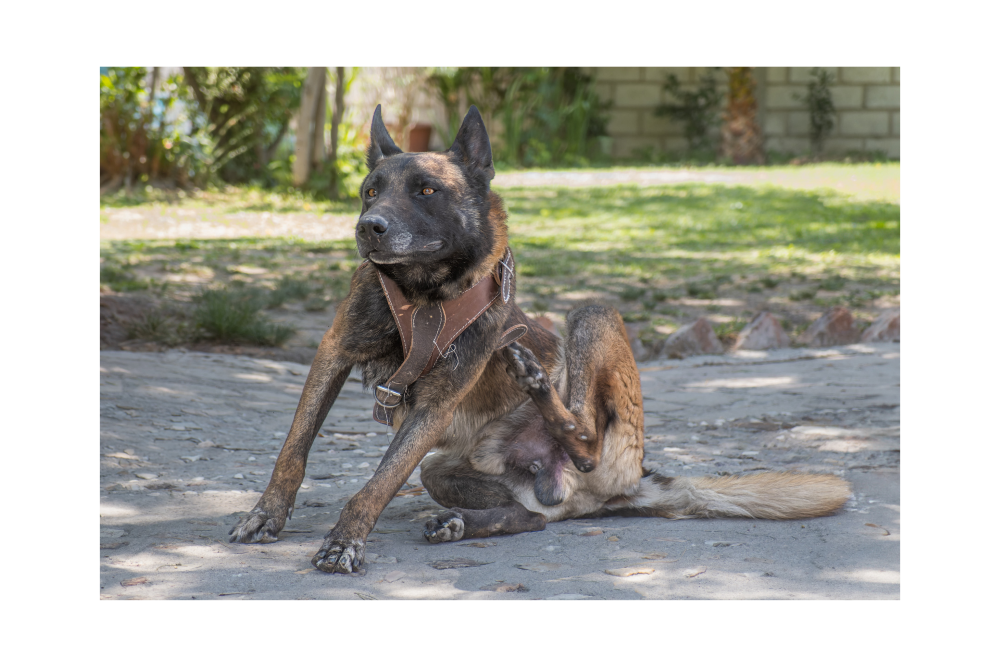Fleas & Ticks in Dogs: What You Need to Know
Fleas and ticks are more than just a nuisance—they can pose serious health risks to your dog and even to your family. At Willowbrook Veterinary Hospital, we want to help you keep your pets happy, healthy, and pest-free. Here’s what you need to know about protecting your dog from fleas and ticks.
How Can My Dog Get Fleas and Ticks?
Dogs can pick up fleas and ticks in a variety of places: parks, trails, doggy daycare, boarding facilities, or even your own backyard. Fleas and ticks can hitch a ride on other animals (like wildlife or other pets) and quickly spread.
What Signs Will My Dog Show if They Have Fleas?
Common signs of a flea infestation include:
- Persistent itching and scratching
- Chewing or biting at their skin
- Red, irritated skin or hair loss
- Visible fleas or tiny dark specks (flea dirt) in their coat
Can Indoor Dogs Still Get Fleas and Ticks?
Yes! Even if your dog rarely goes outside, fleas and ticks can enter your home on shoes, clothing, or other pets. Indoor pets are still at risk, especially in areas where fleas and ticks are common.
How Do I Know if My Dog Has Fleas?
Check your dog’s fur, especially around the neck, belly, and base of the tail. Use a fine-toothed flea comb to look for fleas or flea dirt. If you’re unsure, our veterinary team can perform a thorough exam.
How Do I Get Rid of Fleas on My Dog?
Effective treatment typically involves:
- Administering an effective fast-acting oral flea treatment
- Bathing your dog with a veterinarian-approved shampoo to reduce the number of fleas
- Washing all bedding in hot water, vacuuming your home daily
- Treating your home and yard to prevent re-infestation
We can guide you in choosing the safest, most effective products.
Will Fleas Go Away on Their Own?
No. Fleas reproduce quickly and won’t disappear without treatment. Left unchecked, they can cause serious health issues, including skin infections and anemia.
Are There Safe Home Remedies for Fleas on My Dog?
While there are many home remedies online, most are ineffective or even unsafe. We strongly recommend using products approved by veterinarians to ensure your pet’s safety and comfort.
Where Do I Start with Dog Flea and Tick Prevention?
The best place to start is with a conversation with your veterinarian. We’ll help you choose a preventative plan tailored to your dog’s lifestyle and health needs.
What Different Types of Flea and Tick Preventative Treatments Are There?
There are several effective options, including:
- Oral prescription medications: Tasty chewables that work from the inside out.
- Topical prescription medications: Liquids applied to your dog’s skin.
- Collars: Long-lasting protection worn around your dog’s neck.
We offer a variety of flea and tick prevention options. View on our online pharmacy or fill out a prescription request in hospital.
Ship to Home | Hospital Pick Up
Do I Only Need Flea and Tick Prevention During the “Season” in My Area?
In the Pacific Northwest, fleas and ticks are a year-round concern. Consistent, year-round prevention is the best way to protect your dog and home from infestations.
Are Flea and Tick Preventatives Safe for My Dog to Use?
Yes, when used as directed. The products we recommend have been thoroughly tested and are safe for most dogs. Always follow the dosage instructions based on your dog’s weight and health status.
Are There Any Risks Associated with Flea and Tick Preventatives?
Side effects are rare but can include mild irritation at the application site, vomiting, or diarrhea. Serious reactions are uncommon. If you ever notice something unusual after administering a preventative, contact us right away.
What Are the Risks of Not Using Flea and Tick Preventatives?
Without prevention, your dog is vulnerable to:
- Flea infestations and related skin problems
- Diseases transmitted by fleas including tapeworms, plague, Bartonellosis and more
- Tick bites, which can transmit serious diseases
- Household infestations that are difficult and costly to eliminate
Do Dog Ticks Carry Lyme Disease?
Yes. Certain species of ticks in our region can transmit Lyme disease and other serious illnesses to dogs (and humans). Early detection and prevention are key.
How Do I Remove a Tick from My Dog?
Use fine-tipped tweezers to grasp the tick as close to your dog’s skin as possible and pull steadily without twisting. Do not crush the tick. After removal, clean the bite area and your hands with antiseptic. If you’re unsure or uncomfortable doing this, we’re happy to help.
How Long Can a Tick Be on My Dog Before It’s Dangerous?
The risk of disease transmission increases the longer a tick is attached—typically after 24–48 hours. That’s why it’s important to check your dog regularly and remove ticks promptly. Keeping your dog on an effective monthly tick prevention kills the tick before they are attached long enough to transmit disease.
Can Fleas and Ticks Spread from My Dog to My Home and Family?
Unfortunately, yes. Fleas can infest carpets, furniture, and bedding, and ticks can attach to humans. Regular preventative care for your dog helps protect your whole household.
Need Help with Flea & Tick Prevention?
Our team at Willowbrook Veterinary Hospital is here to help you choose the safest and most effective flea and tick prevention plan for your dog. Call us today to schedule an appointment or ask us any questions!
If you have questions, we would love to answer them for you. Please give us a call at the office at (503) 968-2911, or you can email us at [email protected]. Our staff would love to talk with you!
